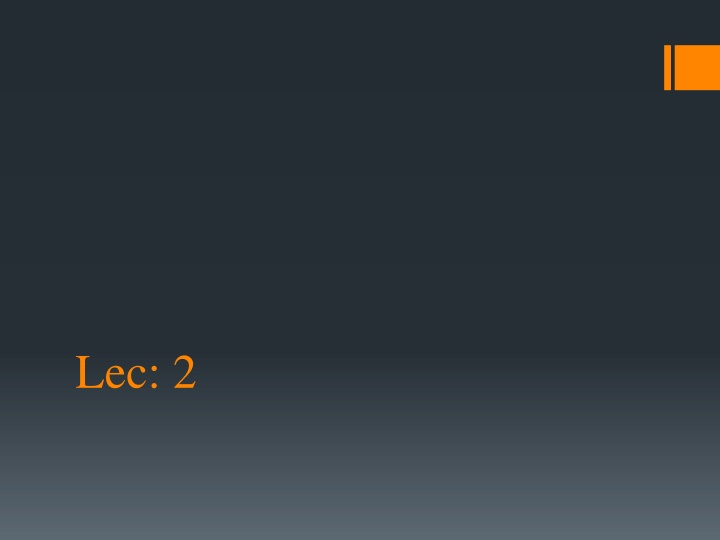
Patient Management and Clinical Examination in Dentistry
Learn about the essential components of patient management, including history taking, clinical examination techniques such as inspection, palpation, percussion, and auscultation, and the importance of extraoral and intraoral examinations in dentistry. Discover the key aspects of gathering patient history, conducting thorough examinations, and formulating accurate diagnoses and treatment plans.
Download Presentation

Please find below an Image/Link to download the presentation.
The content on the website is provided AS IS for your information and personal use only. It may not be sold, licensed, or shared on other websites without obtaining consent from the author. If you encounter any issues during the download, it is possible that the publisher has removed the file from their server.
You are allowed to download the files provided on this website for personal or commercial use, subject to the condition that they are used lawfully. All files are the property of their respective owners.
The content on the website is provided AS IS for your information and personal use only. It may not be sold, licensed, or shared on other websites without obtaining consent from the author.
E N D
Presentation Transcript
The management of any patient include the following 1. History taking 2. Clinical examination 3. Investigations (laboratory investigations , radiological analysis ) 4. Provisional diagnosis 5. Final diagnosis and treatment plan
1-Components of the patient history: Biographic data (personal details) Chief complaint C.C. History of chief complain ( history of the present illness) H.P.I. Past dental history (P.D.H) Past/ present medical history
In Clinical practice, examination of patient involves: INSPECTION. PALPATION. PERCUSSION. AUSCULTATION.
INSPECTION (VISUAL) At the start of every examination, you must begin by looking at patient as a whole before looking at the region in question for signs that may provide clue for a Diagnosis, any changes in the color, or asymmetry of the face, any growth, ulceration, Scar, Defect, and Loss of tissue should be inspected by your eye.
PALPATION: Next use your fingertips to feel for tender spots, Lump, Fluctuant Swelling, & Mobile teeth. Palpation gives information about texture, Dimension, consistency, Temperature & Functional Events.
PERCUSSION: Is the technique of striking the tissue with Fingers or an instrument (e.g., Handle of the mirror). The examiner listens to the resulting sounds & observes the response of the patient.
AUSCULTATION Is the act or process of listening to sounds within the body. e.g., Auscultation to the clicking in the Tempromandibular Joint (T.M.J.) using stethoscope. Auscultation technique is rarely used in Dentistry.
2-Clinical Examination Extra oral Examination. Intra oral Examination
Extra oral Examination -Examination of the Tempromandibular Joint. -Lymph Nodes. -Salivary Glands. -Bones of the Skull. -Sinuses (e.g., Maxillary Sinus). -Ear, Eye & Perioral Tissues. -Neck examined for enlarged Thyroid Gland, Lymph Nodes of the neck, & swelling.
Cervical L.N exam.
Intraoral Examination Objectives 1. To detect soft tissue abnormalities. 2. To evaluate the status of teeth and other hard tissues.
Intraoral examination consists of evaluation of the following areas in systematic ways: Lips, Labial & Buccal Mucosa, Muco- buccal folds, floor of the mouth, Tongue, Hard & Soft Palate, Oropharynx, Muscle of mastication (Lateral & Medial pterygoid, masseter, temporalis), Teeth, Gingiva, Orifice of the ducts of the Parotid and Sub mandibular Glands. then we look for the oral Hygiene weather is good, fair, poor, or very poor. Teeth Examination: The presence, absence, appearance, mobility, retained roots, retained deciduous teeth, Malposed teeth, mobility of teeth classified as nil, marked or gross.
3-Investigations Radiographic examination: BIOPSY: ASPIRATION: LABORATORY TEST I. Bacteriological examination. II. Hematological examination. III. Urine analysis (GUE) IV. Blood Chemistry & Serological examination. V. Culture & sensitivity test
Objectives & Benefits of patient records: It assist in Diagnosis of the diseases. For follow up & future checking. for statistical analysis. for studies & educations. For Medico legal purposes.

















